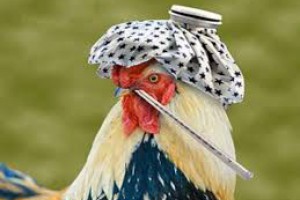Chicken eggs will remain golden in 2023
Egg prices hit historic highs in 2023 in a number of countries hit by avian flu, high production costs and regulatory changes, Rabobank analysts say .
The first jump in prices for poultry products was due to a rise in feed prices in 2021, and when chicken feed prices then fell, avian flu entered the business . In order to create more stability in the value chain, there needs to be better collaboration across production chains with greater willingness of buyers to offset the high production risks of egg producers, Rabobank said in a report.
Particularly in Latin America, chicken egg prices are rising rapidly due to bird flu outbreaks in the past two years. The disease has hit poultry farmers the most in the United States , with over 40 million laying hens culled in 2022, and in February 2023, Americans paid 55.4% more for eggs than a year earlier.
In Japan, more than 15 million laying hens have been affected by bird flu, and in Europe, the laying hen population has declined by 3-5%.
In the European Union, eggs were on average 31.1% more expensive in February 2023 than in February last year. However, there are significant differences between countries. In the Czech Republic, eggs have risen in price by more than 95%, while in Hungary and Slovakia, prices have risen by almost 80%. In Cyprus, the rise in prices was less than 14%.
Broiler MEAT is also consistently becoming more expensive for the same reason. Most countries in Latin America are currently affected by avian influenza, Argentina and Chile have temporarily lost their EXPORT status as a supplier of poultry products to the global market.
If Brazil is also affected by bird flu, especially in the southern states, where about 60% of poultry production is concentrated, this could seriously affect the global poultry trade and exports to Europe. Accordingly, Europeans should be wary of high prices and shortages of export items such as whole broilers and breasts.
An example of how the legislation is affecting the sector is the New Zealand government's decision to introduce a ban on caged poultry, which led to a reduction in the number of laying hens there from 5 to 12%.

